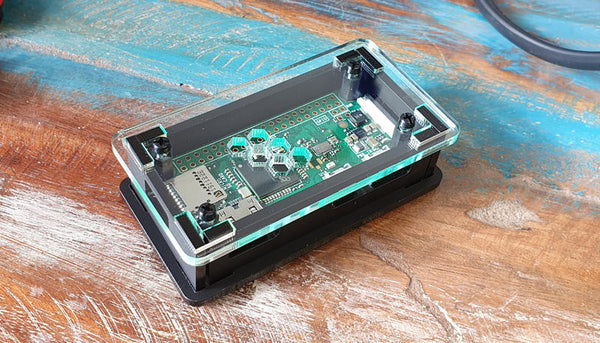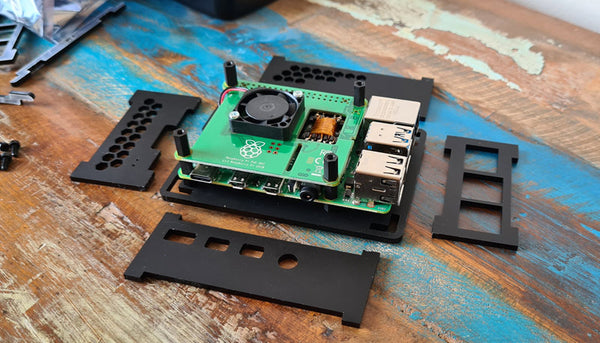This guide will show you how to assemble the PIR Camera Case for the Raspberry Pi 4 or 3. All you'll need is a simple cross-head screwdriver.
Step 1 – Snap the side panels out of their holders. Don't forget to peel off the protective plastic covering from all pieces.
Two side panels are included in the pack which have either 'Pi3' or 'Pi4' engraved on the waste section. Choose the right panel set for your board and keep the other one out of the way to avoid confusion

Step 2 – We'll get the fiddly part out of the way, secure the clear lens protector into place with the long M2 bolts and four nuts. These nuts will double up as a spacer for your camera board to sit on.


Step 3 – place your Raspberry Pi Camera on top and lock into place with another 4 nuts. Don't worry if you have left-overs, we included extras in your pack of parts.

Step 4 – Repeat again for the PIR sensor, again using 2x M2 nuts as a spacer for the sensor board to sit on. Secure the PIR with the remaining nuts. We'd advise having the PIR header pins on the side closest to the camera cable.


Step 5 – Use 4x M2.5 screws to secure the smaller M/F standoffs to the base layer of the case. (Important! If you're mounting this case to a wall using one of our wall mounting brackets you'll want to quickly check out this guide)

Step 6 – Add your Raspberry Pi 4 Model B and stack up the remaining standoffs. This case is extra-tall to accommodate the PIR sensor and camera cables.

Step 7 – Pit stop! Here's a handy photo to show you how the side panels will slot together. Each panel with have a slightly bumpy set of feet (from where we snapped them out of the panels), fear not - these go into the base so won't be seen.

Step 8 – Now is a good time to connect your Raspberry Pi camera ribbon cable, make sure you have it connected the right way round.

Step 9 – Now we'll connect the PIR sensor cables. Three cables are included in your kit, which need to connect your sensor to the Raspberry Pi's 5V, GND and GPIO 17 pins.
In the image below we've removed the cover from the PIR sensor to show you the pin connection labels when facing from the pin side. These need to be connected as follows:
| PIR Pin | Raspberry Pi Pin |
| Left pin ("GND") | Physical pin 6 (GND pin) |
| Middle pin ("OUT") | Physical pin 11 (GPIO 17) |
| Right pin ("VCC") | Physical pin 4 (5V) |


Step 10 – Slot your side panels into place one by one. If the USB side panel is tight, just loosen the spacers a little to get the panel in place, then tighten again.

Step 11 – Now add the lid into place and secure with the remaining two screws

Job done! Now head over to our dedicated GitHub page for setup instructions and code examples.

















